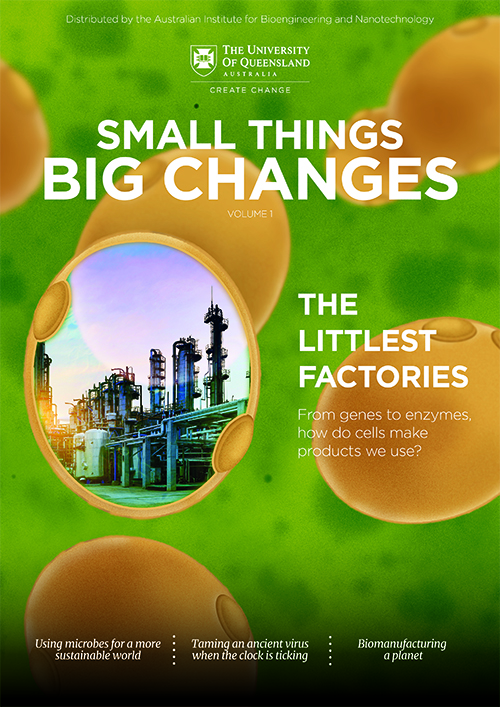To better understand how a microorganism works, scientists use models
Models provide a simplified representation, informed by research, of what is most likely happening inside a cell, explains Dr Esteban Marcellin at UQ’s AIBN.
“Models are a way of mentally visualising cellular systems which are poorly understood.”
“They enable scientists to link theory with experiments and guide predictions of complex behaviours.”
Many different kinds of models exist: from models of individual molecules to models of entire metabolic pathways in cells. There are also models of interactions between cells and between populations of organisms.
“Scientists can then use this information to engineer biology,” says Dr Marcellin.
For example, if you want a microbe or a cell to convert a simple sugar into a new pharmaceutical, a fragrance or a jet-fuel, then making a model of the biochemical pathways in the cell can be very useful. Such a model may reveal new ways to use the microbe’s existing genes, or could predict the effect of introducing entirely new pathways. Models can also reveal bottlenecks in the production of a product of interest, and identify genes that should be removed. In this way, models serve as a predictive tool that can guide research.
Did you know? Yeast is one of the most commonly used organisms in synthetic biology, yielding a range of chemicals for a variety of applications.

